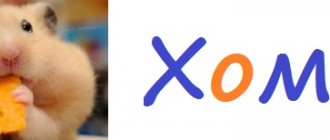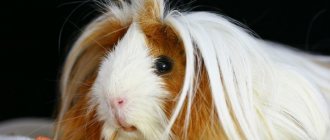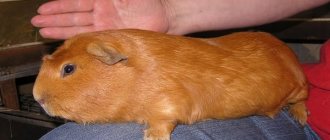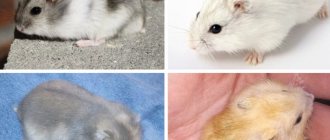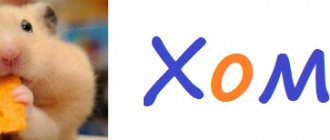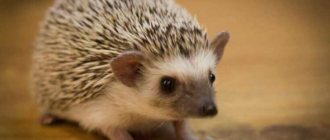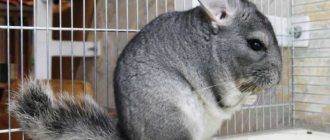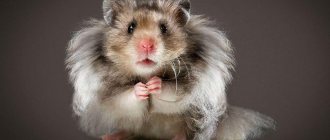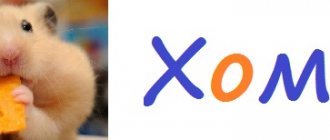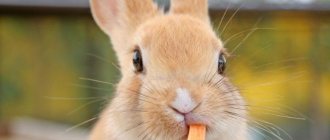The guinea pig is a species of semi-ungulate rodent. The second English name is “kewi”. The pet is affectionate, easy to care for and can become a good friend to a child. The animal teaches the baby care and responsibility. The pig is larger in size than mice, hamsters and rats. She has short legs with claws, a small neck, hard fur and practically no tail. A rodent's teeth are small and grow throughout its life.
There are breeds with long and short hair. Photos of guinea pigs are presented in nurseries and other sources. Small individuals have difficult to distinguish sexual characteristics.
Experts have learned to determine by the lower abdomen. Two males cannot live in one cage. It is better to choose either opposite-sex pairs or two females.
Breeds
Currently there are more than 80 varieties. Each breed of guinea pig has its own characteristics in appearance and habits.
The most popular ones can be identified:
American. Short fur of different colors, large eyes and a crooked nose. Affectionate and playful animal.
Peruvian. The most ancient breed. The wool can reach a length of up to 50 cm. The colors are different.
Skinny. The rodent has no fur at all. The animal is afraid of direct sunlight and cold. In appearance they resemble hippopotamuses.
Note!
- How to choose a mattress and not make a mistake? Review of the best models, size table
- Cotton blanket: advantages and disadvantages, rules of choice and care
- Review of ideas for exterior home decoration
Alpaca. They are distinguished by fluffy and curly hair. The eyes are shiny, usually matching the coat, and the ears are large and hanging. Smart pet.
Teddy. The breed appeared by chance in 1978, but has already gained popularity. This pet guinea pig looks like a teddy bear and children adore it. In small individuals, the fur is curly, but straightens with age.
Satin. The rodent's fur shines in the sun and feels like silk. The color is usually monochromatic. An unusually beautiful pig.
Kui. It can reach very large sizes and weight. The breed is equated to rabbits. The cage will be very cramped for your pet; it is better to keep it in a pen.
Himalayan. An animal with red eyes and white fur. There are spots on the nose and ears. Requires ambient temperature control and appropriate care.
Note!
- How to protect a gazebo from rain and wind in summer and snow in winter - a review of the best options
Chicken - description, types, classification, nutrition and maintenance of domestic chicken (115 photos and videos)
- Fretka - lifestyle, care and character traits. 115 photos and videos tips for keeping a pet ferret
Rosette. This breed got its name from the type of wool. The entire cover consists of small rosettes. The ears are large and do not stick out.
Rex. It is also called the royal pig. It has short fur of various colors. The breed is prone to obesity.
Interesting Facts
- The main difference between porpoises and dolphins is that they do not tolerate life in captivity. The maximum period of life in a water enclosure does not exceed three years.
- They are very sensitive to the environment; dirt in sea water is another reason for the death of these peaceful animals.
- Until the mid-twentieth century, they were exterminated en masse.
- It was only in 1964 that fishing for this species was banned at the state level.
- Even today, poachers exterminate mammals; they are not even stopped by sanctions in the form of fines that must be paid to those who conduct illegal fishing.
- In 2007, a remarkable phenomenon happened at the Danish Aquarium: in captivity, a female large porpoise gave birth; for the scientific world this was a real event.
Habits
In most cases, very calm and affectionate animals. Rodents show their character in an unusual way. If they are happy, they may jump around the cage and make squeaking noises.
Small individuals are afraid of people and constantly hide in a safe place. It is necessary to accustom the animal to hands carefully without stress.
Aggression manifests itself only after the birth of offspring. For a month, the female will not let anyone near the babies and will defend herself in all known ways.
If the pig is chewing on the cage, then it is bored or there is not enough space. You can expand the cage, play more often, or add another individual. It is dangerous to chew on a cage.
The norm for these animals is to eat their own droppings. Thus, the animal saturates its body with the remaining beneficial substances.
But it’s better to clean the cage in time and expand the diet with vitamins. Your pig may chatter his teeth, which is a sign of stress. It is necessary to temporarily remove irritants.
Owner reviews
Experienced pig owners often share tips and tricks for caring for their pets. Many people warn that it costs about 1.5-2 thousand rubles per month to maintain an animal, not counting visits to the veterinarian, if such are required. The pet will need bedding material, dry food and vegetables. The latter are given cut into large pieces so that the animal can grind down its incisors while feeding.
Trimming nails requires care and patience - not all pets like this procedure. In some cases, the help of a second person is needed to firmly hold the struggling animal. Additionally, use coarse material for bedding or let the pig run around more often so that the claws wear down naturally. Overgrown claws prevent the pet from moving and deform the feet.
You need to be prepared that pigs, especially long-haired ones kept indoors, shed all year round. Therefore, you will have to not only clean your pet’s cage, but also regularly clean clothes and furniture.
Lifespan
In the right and comfortable conditions for keeping guinea pigs, the animal can live up to 10 years. There are also individuals 15 years of age. It all depends on diseases, care, breed and other factors. In nature, rodents live much shorter lives. Heavy weight and natural selection have an effect.
Cage requirements
Guinea pigs can be kept in terrariums and aquariums. But the most common home is a cage. The larger the size, the better for the rodent. The cage should be placed in a bright place, but not exposed to direct sunlight.
It is advisable to keep it quiet, but people should be in sight. There should be no tall structures in the cage itself. Any fall is dangerous to health and life.
The bottom must be covered with sawdust or pebbles. You can hang a hammock and a house for shelter.
Nutrition
It is important to know what guinea pigs eat so that there are no health problems for your pets. In nature, the rodent feeds on seeds, berries, leaves and roots.
At home, pigs need to eat hay and ready-made balanced feed. For dessert, you can give him nibble on fresh vegetables, salad and fruits.
To allow teeth to be ground down, cherry branches are placed in the cage. It is more convenient to pour water into the sippy cup every day, so it will not spill and will provide the pet with the necessary moisture.
Other care
- Your guinea pig's nails need to be trimmed as they grow.
- It is often not worth bathing an animal. Pigs are clean.
- Long hair is brushed once a week.
- Clean the cage every 4 days and whenever it gets dirty.
- The body must be examined for injuries, cuts and parasites.
All in rosettes - Abyssinian
It is very easy to distinguish Abyssinians - they are completely in rosettes, the hair is not very long, about 3-4 centimeters. This coat does not require additional care. There should be eight rosettes, evenly distributed throughout the body. Abyssinians have a more active character and are big fans of running. They are friendly towards the owner, but they get into fights with their relatives much more often.
Diseases
The animal does not get sick often, but when the first signs are detected, it is necessary to begin treatment. It is better to trust a professional doctor who will select the optimal treatment.
The most common diseases are: worms and parasites, gastrointestinal disorders, colds, dental anomalies and eye infections.
Pet health
The animals have strong immunity, so infectious diseases rarely bother them. They usually appear if the pet often walks outside or if one of the household, including other animals, gets sick. Common infectious diseases include:
- skin infections;
- salmonellosis;
- toxoplasmosis;
- ringworm;
- coccidiosis.
In addition, a pet can be harmed by physical injury or a violation of the diet: spoiled or poisonous foods, intolerance (allergy) to some component. In this case, cystitis, conjunctivitis, and neoplasms are possible. Foods prohibited for pigs include:
- dairy products;
- products of animal origin;
- sweets;
- flour;
- cooked food from the common table.
The first sign that your pet is feeling unwell is a decrease in appetite or refusal to eat. In such cases, you should find out the reason for this behavior as soon as possible and take action. Prolonged hunger strikes lead to exhaustion of the body and worsening of the disease.
Reproduction
Animals can start mating at 10 months. After mating, it is recommended to remove the pig before the birth of offspring. Pregnancy lasts on average two months (the exact period depends on the number of babies). During this period, the female should be left alone.
Labor usually occurs naturally within an hour. If the pig cannot give birth, then you need to call a veterinarian. If the birth is successful, the pet will gnaw the umbilical cord itself. If this does not happen, then it can be cut with sterile instruments.
Feeding
Pigs eat plant foods. Their diet contains both dry food and succulent food. There should be more of the latter, but not too much, otherwise it will lead to diarrhea. Juicy foods include grass, greens, and vegetables. Sometimes fruits or berries are offered in small quantities as a treat. A variety of vegetables are offered. A large amount of one product will lead to negative results. For example, too much white cabbage will cause flatulence in your pig. Feeding is carried out at the same time, because The animal’s gastrointestinal tract needs regular portions of new food, which “moves” the previous one through the intestines. The pet may die if it does not receive food within 18 hours.
Pigs, like other rodents, periodically eat their own excrement. This is due to the fact that vitamins K and B remain in the primary, soft feces, which are necessary for maintaining health. Therefore, it is better not to purchase a cage with a special tray. This is convenient in terms of hygiene - long hair gets dirty less, but then the pet will not be able to take doses of natural vitamins and will have to buy them additionally at the pharmacy.
The pig's water is changed every day. Use filtered or boiled at room temperature. Cold water leads to colds or pneumonia. On average, a pet drinks up to 80 ml of water per day. If your pig drinks little, most likely she needs enough fluid from succulent food.
Training
The guinea pig is trainable. Different individuals may need additional time to learn.
Most popular tricks:
- respond to a name and come to a call;
- stand on hind legs when required;
- run in a circle for a treat;
- roll the ball and climb over the hoops;
- go to the toilet in the tray.
